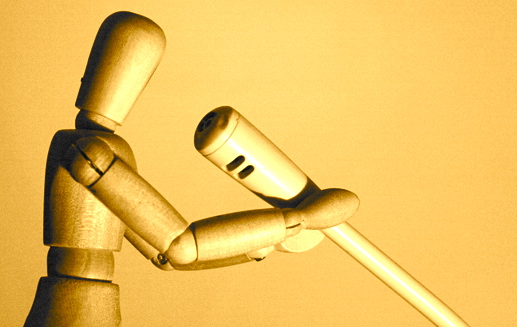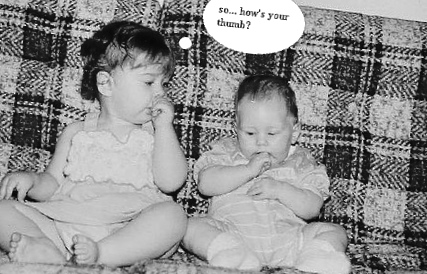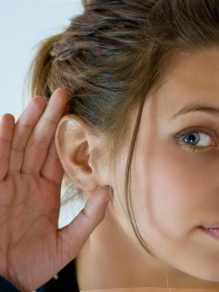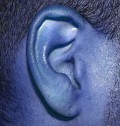What to Do to Improve Communication

For Hire: Effective Communicators
“Employers at high-tech companies increasingly search for employees who possess not merely technical skills but strong communication skills as well.” (according to SUNY, the State University of New York: the largest system of higher learning organizations in the world.)
Many other institutions, companies, employers, and universities are looking for individuals who know how to communicate effectively. The greatest thing you can do for your success rate is to improve communication skills in your repertoire.
Being an effective communicator should not involve taking out a student loan and attending a university for four years or more, though it probably wouldn't hurt. Rather, improving your communication skills is something that can be done any hour of the day in any place in the world, as long as there are other human beings within your reach to practice on.
Following are several practical, simple actions you should work on to improve your communication skills. The more often you practice, the sooner these actions will become a habitual part of your presentation, whether in front of an audience or in a conversation.

1. To Improve Communication: Learn to Listen
All of the influential and effective people I know have had this in common: they know how to listen. Marketing specialists and salesmen will tell you the same thing. Listening to their customers and to the people they hope to influence is the only way that they can meet needs and create lasting relationships. In friendships and family relationships as well, the ones who genuinely listen are the ones who truly care.
Listening is hard work! It involves an active, present mind. Anyone can tell if your mind is not present when they are talking to you. If you aren't listening to them, they will be able to tell by the vacant look in your eyes (or lack of eye contact), and by the distance between, or irrelevancy of, your responses. A good way to practice listening is to recite what they just told you back to yourself in your own mind, so that you could re-tell someone else what you just heard or write it down later without any discrepancies.
To listen well, you must focus on the other person more than yourself. One of the great reasons why most people fear public speaking so much is because they focus on themselves more than on their audience. However, every great public speaker "listens" to his audience as he talks to them. He watches their body language, their expressions, their responses, and looks into their eyes. His speech is not about himself, it is about his audience. If at any point he realizes they are getting bored, tired, or unable to concentrate, he will adjust his message to fit their needs. Perhaps an unexpected anecdote, or a stand-up-and-stretch break would meet these needs, or perhaps even an entire shift in the style of presentation and message. I know some effective teachers and speakers who have acknowledged a distraction out loud ("Well, that thunderbolt was sounded like an affirmation from heaven. Thank you, Lord!"), or spent the first ten minutes of their speech talking about something that was on all of our minds, just so we could mentally "get over it" (discussing a recent national tragedy or praying for a mutual concern).
Listening well also involves asking appropriate questions to get the conversation (or speech/discussion) on the right track. Asking good questions will give your audience the feeling that you are genuinely interested in getting to know them better, and that you really do want to hear what they want to say. "How are you?" has become too casual of a greeting to be a good conversation starter for most good conversations. Better would be to follow up "How are you?" with more personal questions about the person's family, pets, opinions, hobbies, good/bad sides of their job, background, hometown, books they've read, places they've travelled, etc. Often a simple question relating to one of these topics, along with a genuine demeanor to show your interest, will lead to deeper and more relevant topics. Someone who has been talking to a sincere listener for several minutes often makes a great listener himself when he realizes that you, too, have something to say, and you will get your chance to talk as well.

2. To Improve Communication, Make Eye Contact.
Whenever we listen or read or receive some form of communication, we are concerned about the truth. Are they telling me the truth? What is the truth, and can they tell me more of what I need to know? As soon as we have any doubt about the validity of the other person's statements, we stop listening, check out, or walk away. The same happens when we read material, watch the news, or listen to the radio. Tabloids are a great example of ineffective communication. They have flashy headings, amazing pictures, and shocking news. However, tabloids rarely communicate effectively because most of the populace knows to take anything they read in the tabloid magazines as a grain of salt. If it probably isn't true, then it probably won't be read.
What does this discussion about truth have to do with eye contact? Much in every way. Eye contact reveals truth. It is a rare person who can lie while looking someone in the eye. The Bible says the light, or lamp, of the body is the eye (Matt. 6:22) and another well-known truism states that the eyes are the windows to the soul. How can you expect to communicate your soul to another person if your "windows" have the blinds drawn?
In many ways, our society's rapidly developing "communication" technology has actually decreased high quality communication. Some things simply should never be said in an email or text message. Face-to-face communication will always be the most effective way to help two people see "eye-to-eye."
Eye contact when public speaking is a must. Make eye contact with as many people in the audience as possible during your talk, being careful not to just sweep your eyes across the audience or over their heads. Make eye contact with each person until you see them nod, smile, or make recognition of some sort, as they would do if you were in a one-on-one conversation. Try not to release their eyes until you get that recognition. Most people in your audience will find it impossible to hold eye contact for that long without nodding in agreement.

3. To Improve Communication: Work on Verbal Skills
Practice Enunciation
To pronounce your words clearly in normal conversation or public speaking, practice enunciation by exaggerating every syllable. Grab a book and read out loud to a mirror, opening your mouth louder as you say your vowels, and pronouncing each consonant crisply and drastically. Watch your lips, tongue, and jaw in the mirror, practicing movement and flexibility. Exaggerate everything you do in practice and your normal conversations or speeches will have more precise pronunciation that will be easier to hear and understand.
Practice Volume
A good communicator knows when to raise his voice and when to lower it. A raised voice can show excitement, zeal, anger, energy. A lowered voice can show reverence, sadness, mystery, thoughtfulness. Both a lowered and raised voice can indicate that what you are saying is important, if your regular tone of voice is not usually lowered or raised.
Keep in mind that you should adjust the volume of your voice according to the setting you are in. If there are many other conversations going on in the room or a lot of background noise, you will have to step closer to the person you are talking to or raise your voice so they can hear you without asking you to repeat yourself. Many people make the mistake of self-consciously touching their mouths or shielding their mouths with their hand as they talk. This makes it even harder to hear and understand them, because their hands damper the sound waves and prevent the listener from seeing their lips move (much of face-to-face conversation depends on reading lips, especially when it is hard to hear the other person).
Practice increasing your voice projection by breathing and speaking through the muscles in your diaphragm without tightening or straining your throat. Some speech coaches suggest holding a folding chair at arm's length while standing up, and speaking as loudly and clearly as possible. You will feel your diaphragm tighten and work as you speak. Remember this feeling after you have set the chair down, and try to duplicate it as you speak in public.

4. To Improve Communication: Use Visual Aids
Dress Well
What you wear and how you wear it will have a profound influence on the people you communicate with. Dressing appropriately for the occasion will show you respect the people around you without offending or distracting. A Hawaiian church I know of loans an "aloha" shirt to its visiting pastors so that the congregation will be able to receive the message without being distracted by the formal dress of the preacher. See my article on How to Dress Well and Create a Good First Impression for more on the topic of dress and how you can communicate through it.
Create Visual Appeal
Though powerpoint presentations are a dynamic way to enhance your speech or lesson, you can use something as simple as a match, an apple, or a rock to achieve memorable visual appeal: an "object" lesson! Think analogies. What could a match --or fire-- represent? Perhaps something we fear and respect, danger, power, life, spiritual light, or resources, could all be represented by a flame of fire. Another easy way to add visual appeal to your presentation is to sketch illustrations for your story or diagram your talk on a whiteboard, pass out notes or fill-in-the-blank sheets for your talk, create dialogue (or brainstorming) between you and the audience that adds points or words to your chart or diagram on the board.
Use facial expressions
Good communicators know that they cannot wear a stonewall countenance. An expressive face shows thoughts and feelings that enhance and verify the words coming out of the mouth. If your face doesn't agree with the words you say (ex: cold and distant expression when you are saying you are glad to see someone), no one will believe your words. However, a smile in both the eyes and the mouth, along with a friendly greeting, doubles the effectiveness of what you say. They best way to practice an expressive countenance is to observe the faces of others as they speak, especially if their faces vary drastically from moment to moment depending on what they say. Try to match their expression and understand what causes it. Be a little vulnerable, a little dramatic, with your eyes and eyebrows, mouth and cheeks, without being unnatural or clownish. Your efforts will be rewarded.

It is not hard to improve your communication skills if you make a concentrated effort to practice these four tips of effective communication: listening, eye contact, verbal techniques, and visual aids.
© 2009 Jane Grey






